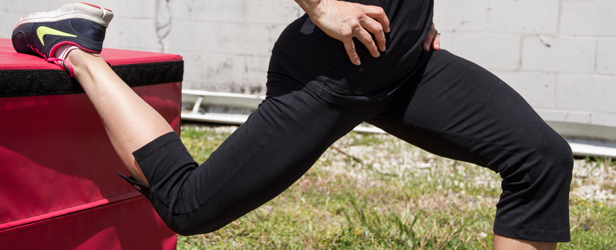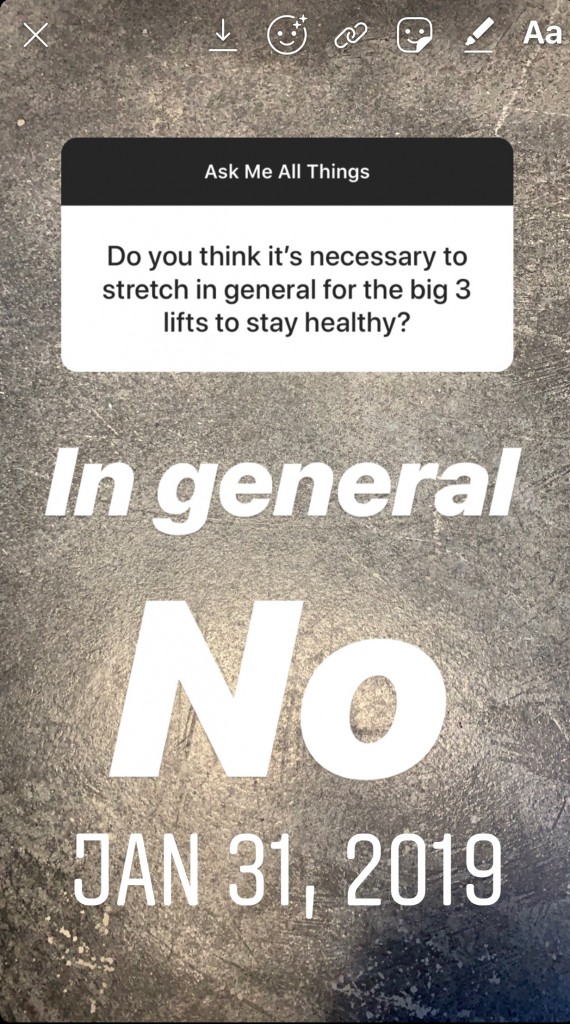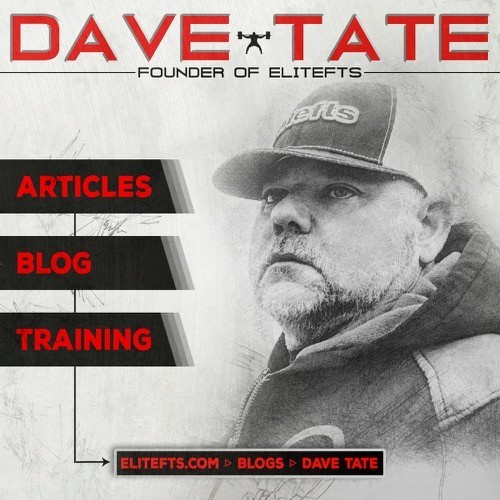
I get a normal amount of crap on social media. Most of it means nothing to me, some is simply miscommunication, some are shortcomings I do not see or know about with the business, and some are what I would loosely describe as personal attacks or very poor trolling. However, the vast majority of the exchanges are positive.
During my AMA yesterday, one of the 104 questions I answered was about stretching for the big 3. I received an abnormally large amount of shit for this one, so rather than copy and paste 20+of the same replies, I felt it would be more beneficial to make a post so I can expand on the idea and provide more context.
The question was, "Do I think stretching is necessary to stay healthy for the big 3?" My answer was "In general, no.
In later questions, I elaborated on my answer and it was along the lines of: whatever your normal range of motion is, begin your warm-up training from there. If for some reason you are tighter than normal, then warm up and bring yourself back to baseline. This can be through stretching, massage, roller, whatever - but get back to your normal - only. On the flip side, if you find that you are more flexible/looser than your normal, then you need to tighten things up. This is rare, but there are many cases where one is compensating and not tight in the right way, so movements like the McGill big 3 are suggested.
Let's suppose you do a stretch with the intent of increasing your range of motion before a squat session. You stretch out your hamstrings, lats, lower back, everything. This just created a more unstable environment to lift in, so you hope through your warm-ups you are able to get tight enough to protect the spine. I have never seen one powerlifter or coach tell a lifter they need to be looser when they lift. It is always "get tighter." This allows better force development and protection from the heavier loads (for powerlifting).
STRETCHING
So, stretching before comes down to each specific case. I do not think you can suggest a solid yes or no either way. Give me a day, and I'm sure I can find studies for both sides of this. I answered based on my own experience and what I have seen (more on this later).
What about during training? For powerlifting, my answer would be, in general, no, unless something feels unusually tight. For bodybuilding, I do think there can be a case between some sets, but they are not at the same loading risk as powerlifters.
Post-training? I would say, in general, yes, but for restoration. Do not force the body into ranges of motion you are not used to and make sure to select stretches that put less stress on the joints. You want to stretch muscles, not compress joints. For every stretched muscle, there is a contracted one. For every distracted joint, there is a compressed one. I love belt squats. They are great for distracting the spine. But when doing so, they are ramming the femoral head into the labrum in a way that the belt is jamming the acetabulum down and the ground force of the movement the femoral head up. Is this bad? Again, it depends. If someone has a torn labrum and bone spurs, then they may want to think about how many sets, reps, and how often they do it. Wear and tear is wear and tear. If there are no issues with the hips - great! My point is, for every contraction there is an opposite reaction. One stretch could be great for one lifter's pecs - where that very same stretch may wear the hell out of another's shoulder if they have bone spurs and labrum tears.
WITH ALL THIS IN MIND
We need to look at the positive impacts of stretching. Has it been shown to prevent injuries on a broad scale? Has it been shown to increase the maximal stretch of a squat, bench press, or deadlift? (Remember we are talking about powerlifters.) The biggest gauge I use is looking at top lifters, regardless of federation or style of lifting. If you go into the warm-up room of any national level competition, will you find the majority of those lifters stretching? Remember, these are people who spend thousands to do a sport that pays no money back. They risk their bodies week in and week out. Their training puts a strain on their relationships, and they could be doing other things that put their health at risk. In most cases, they will do whatever it takes to lift 5 more pounds. If stretching would add 10 pounds on each lift, they ALL would be doing this in every warm-up room around the world.
This is why I wrote,
"In general, NO."










